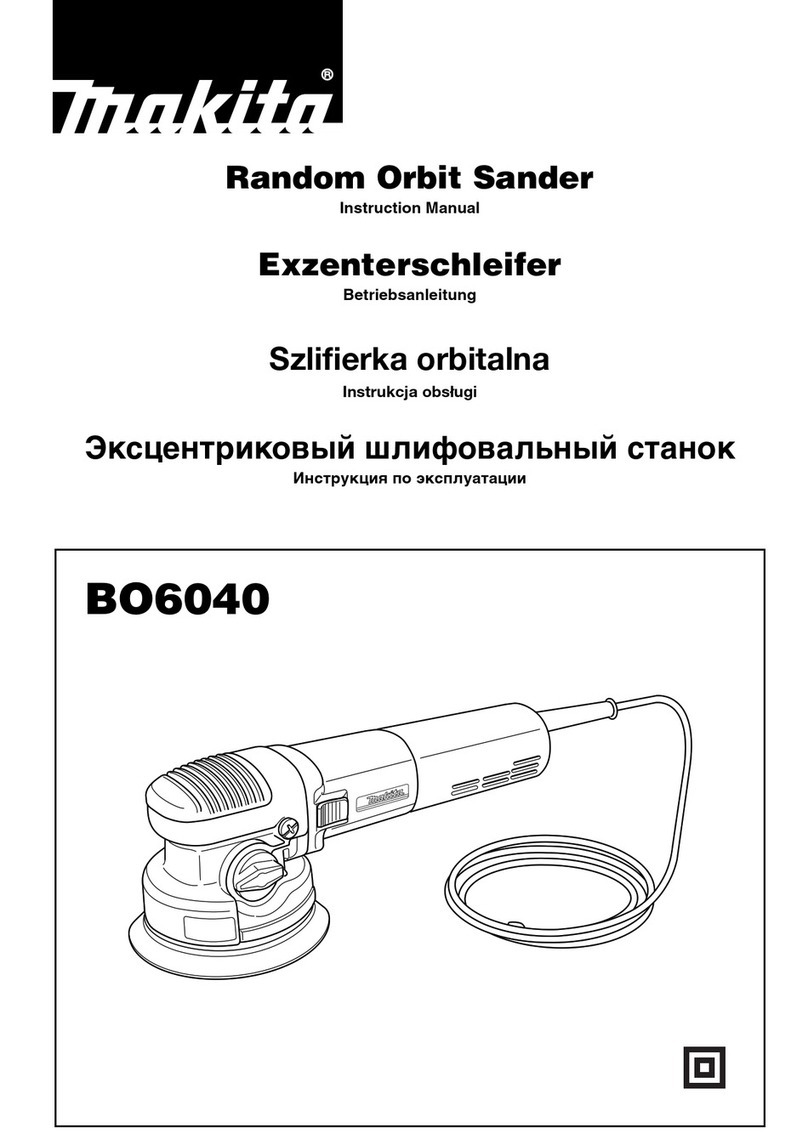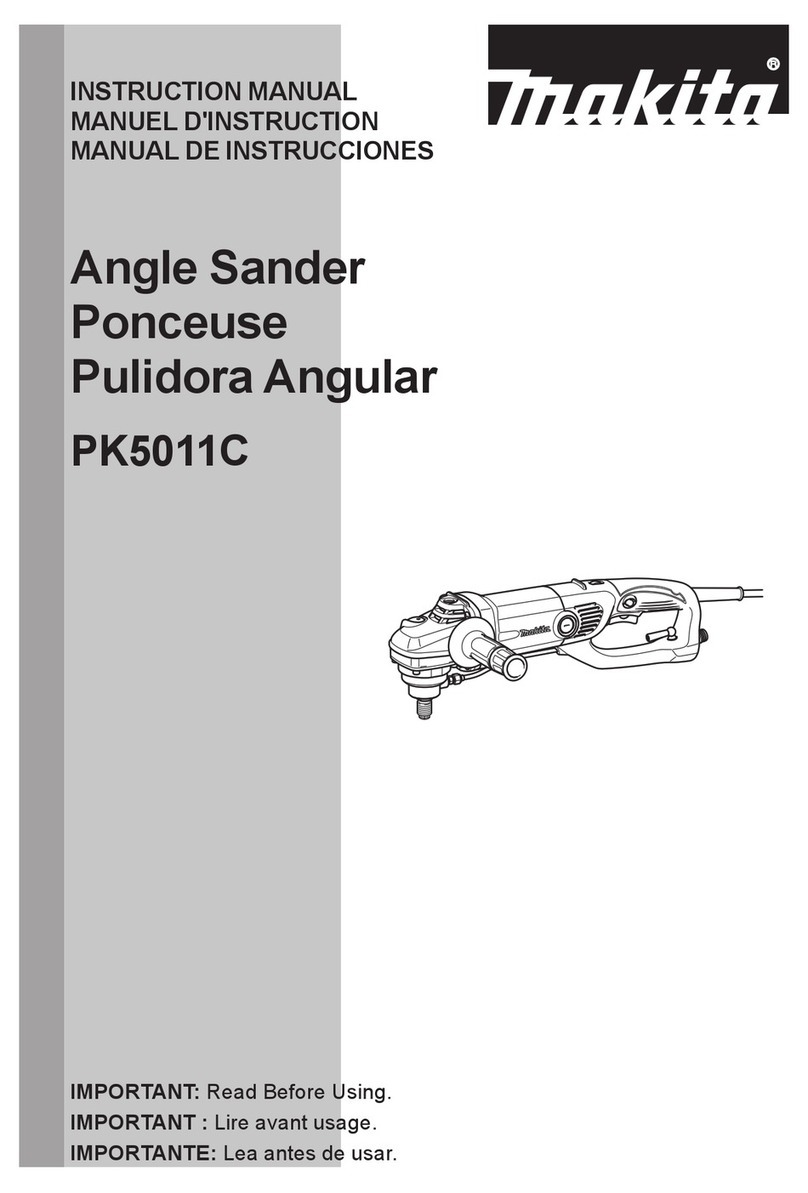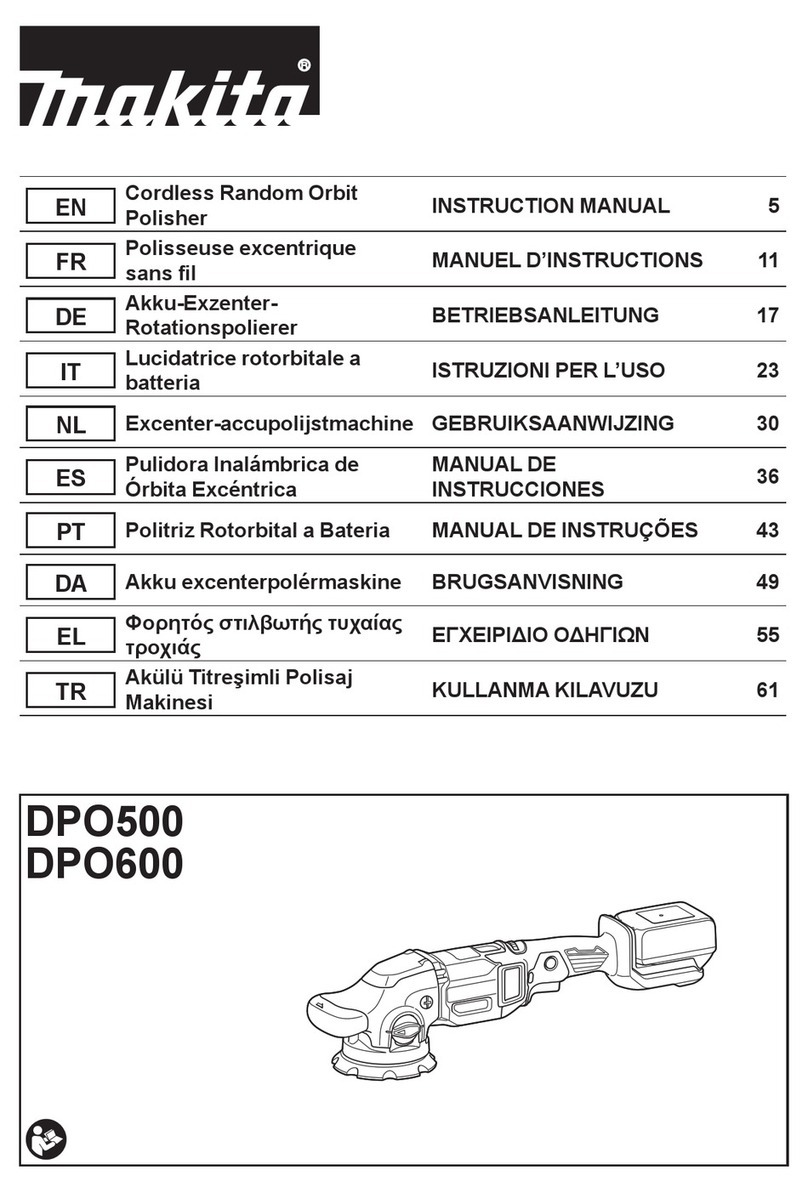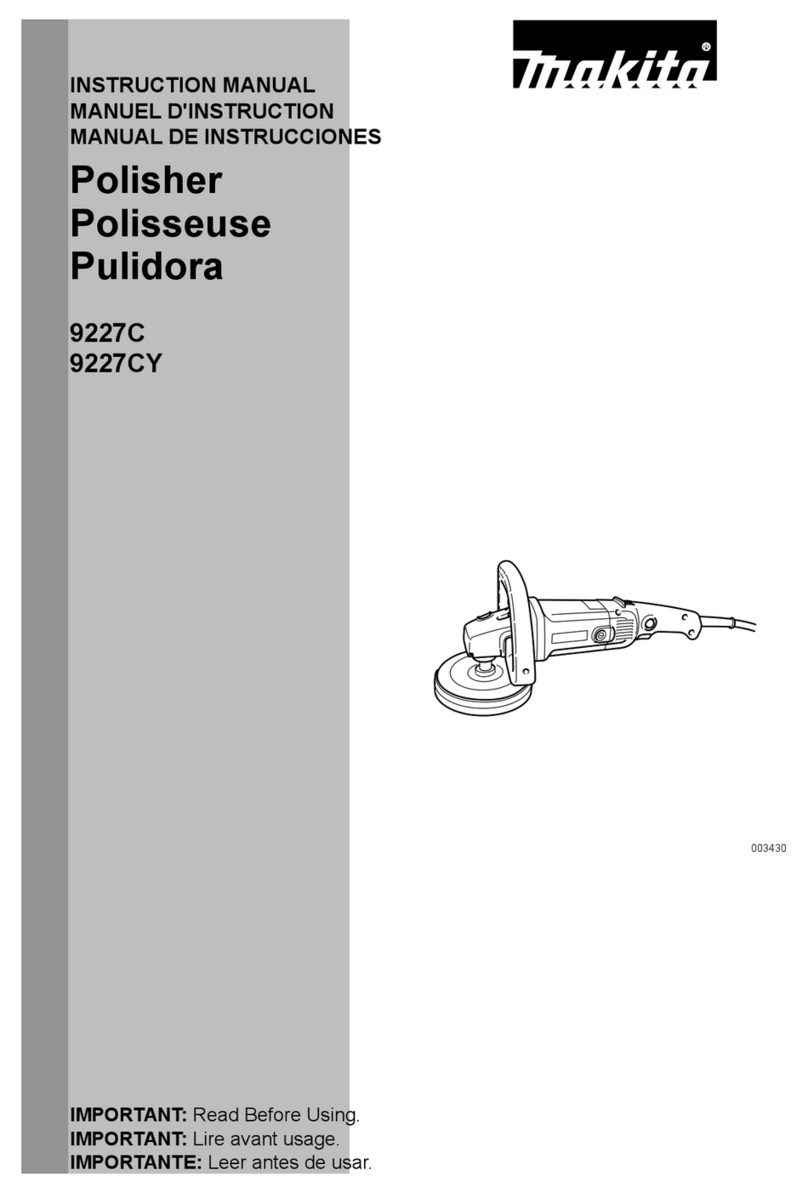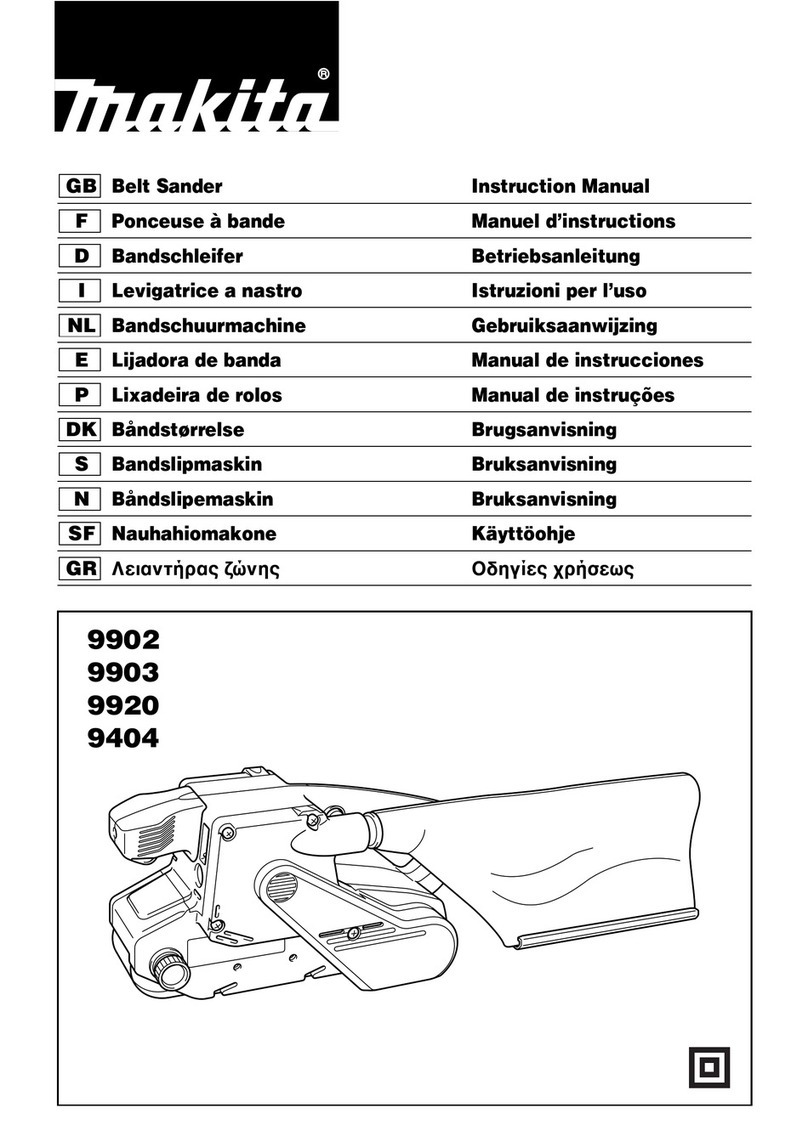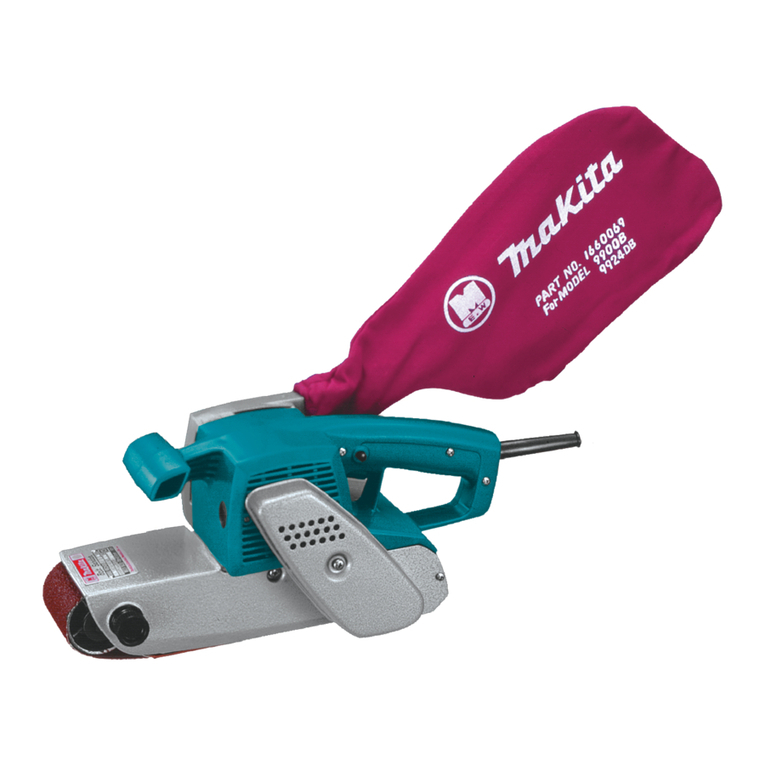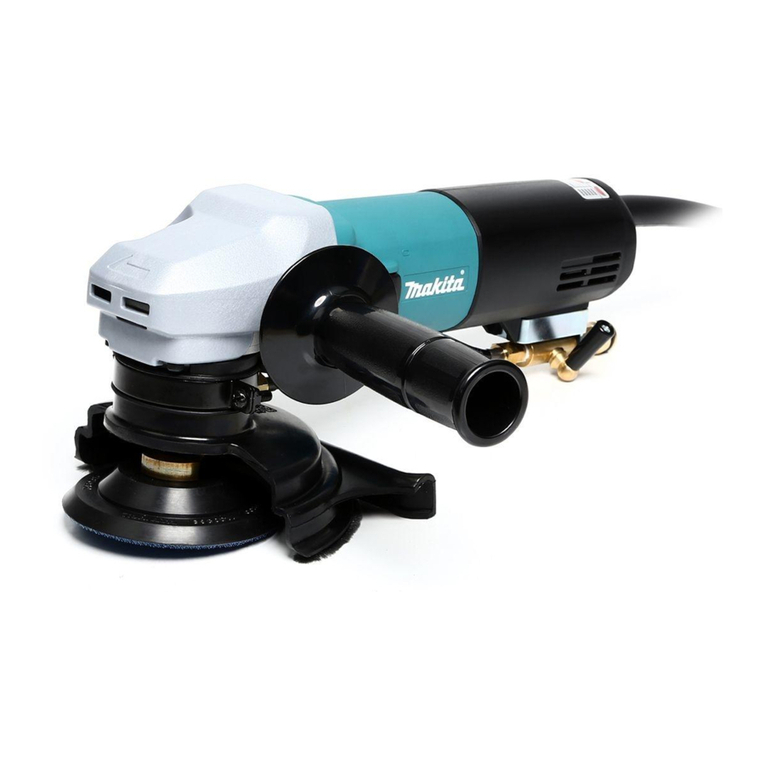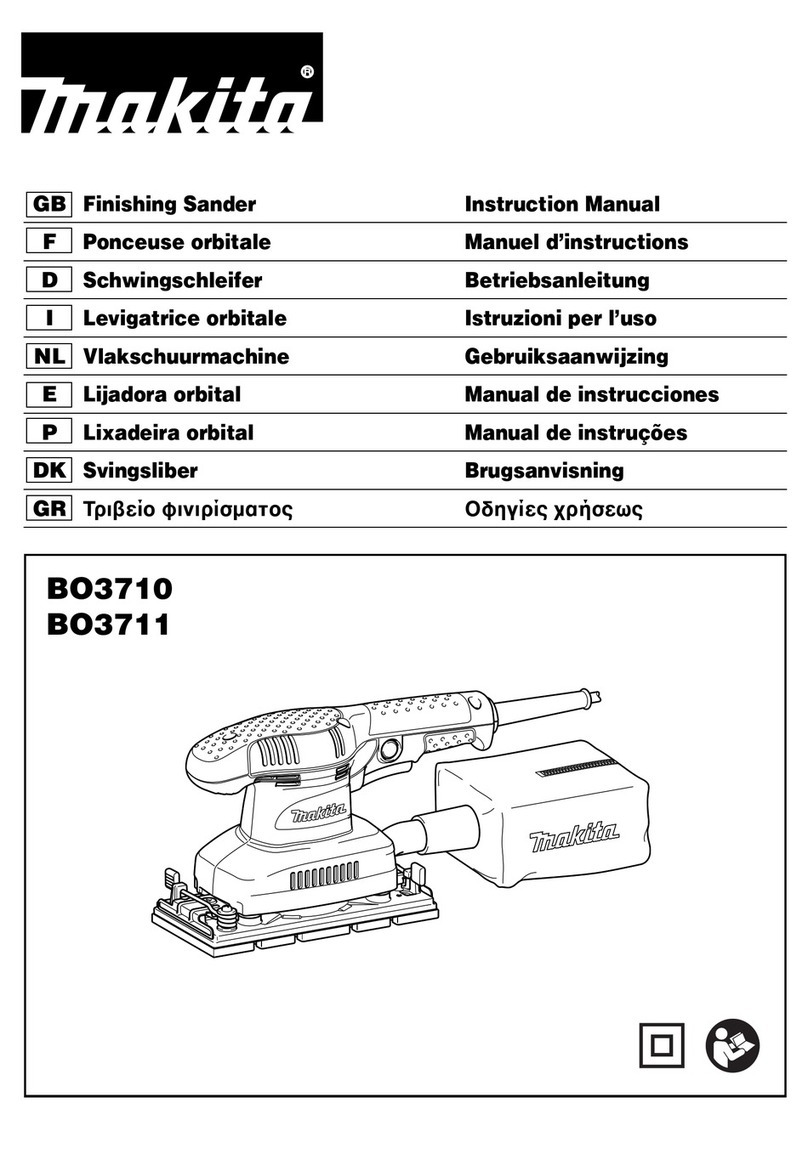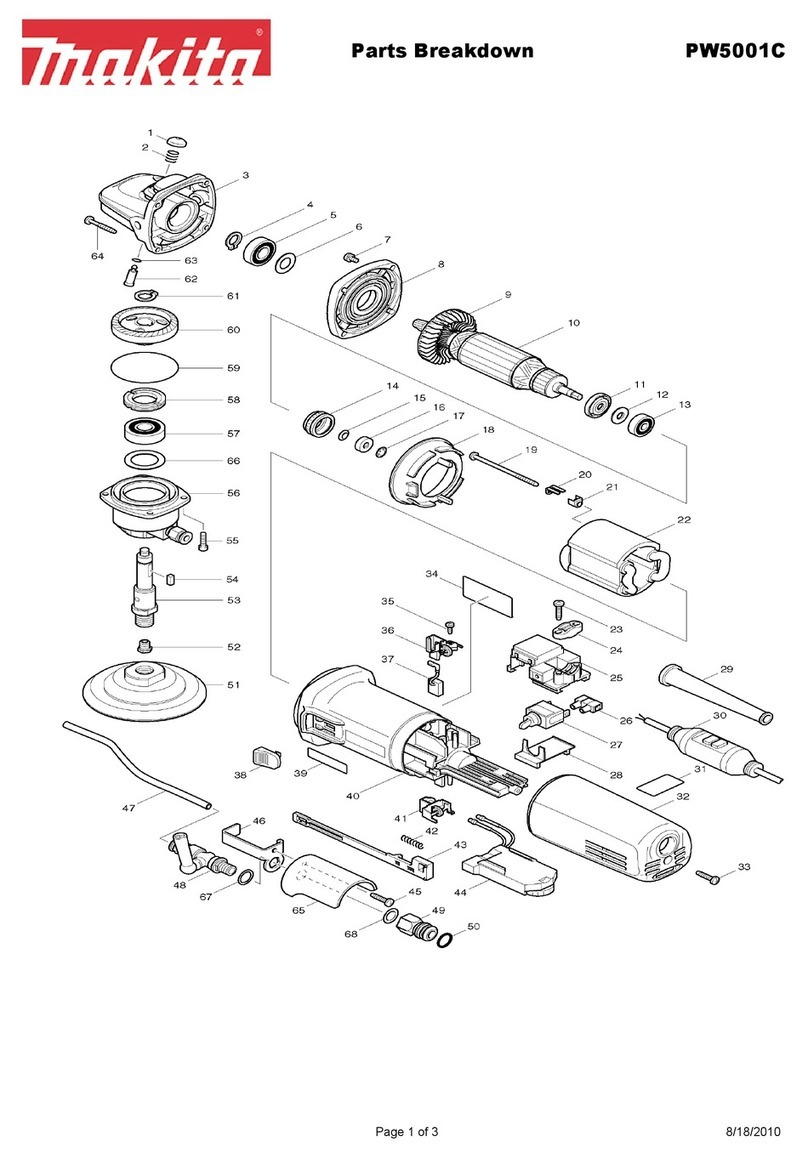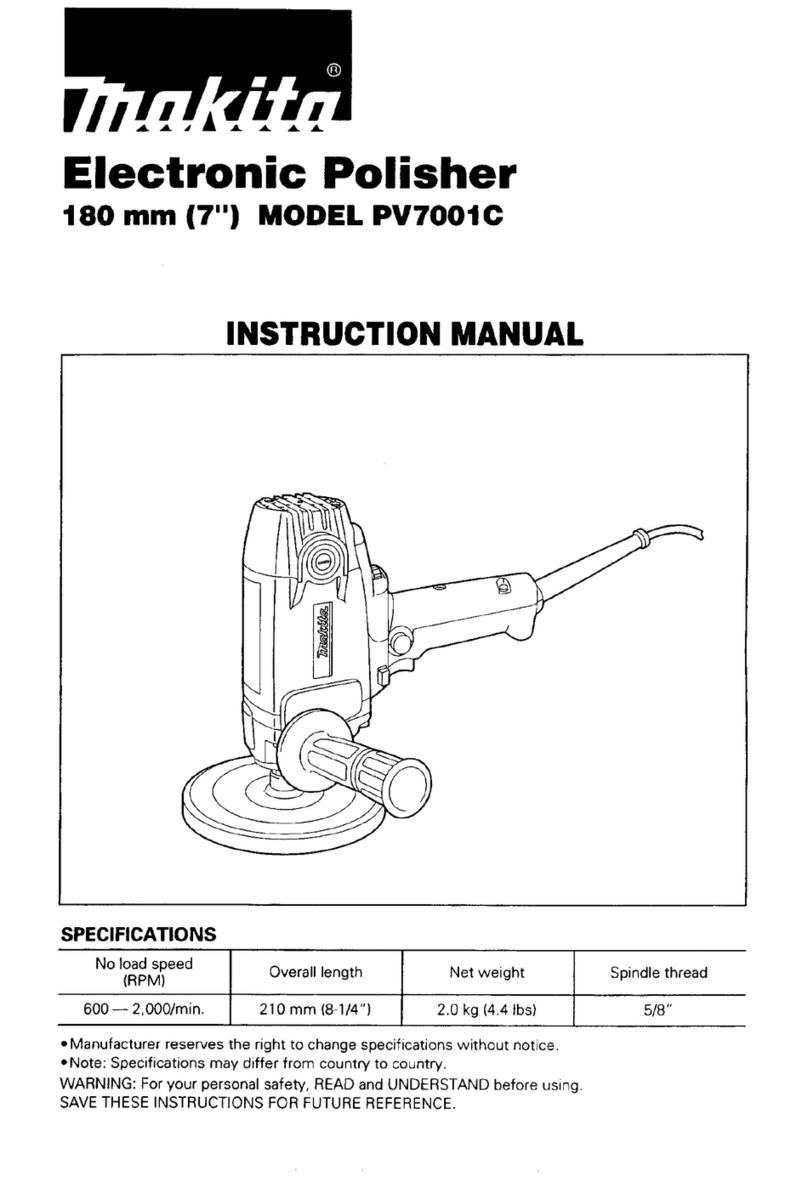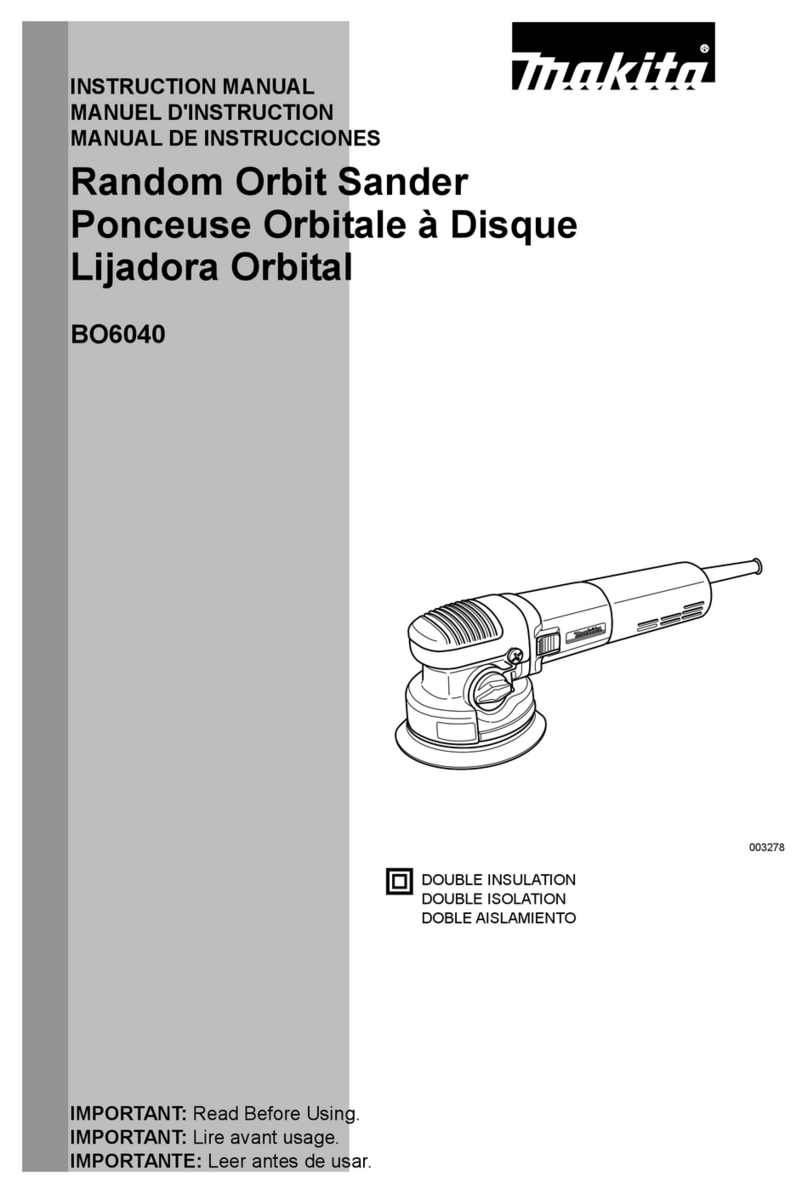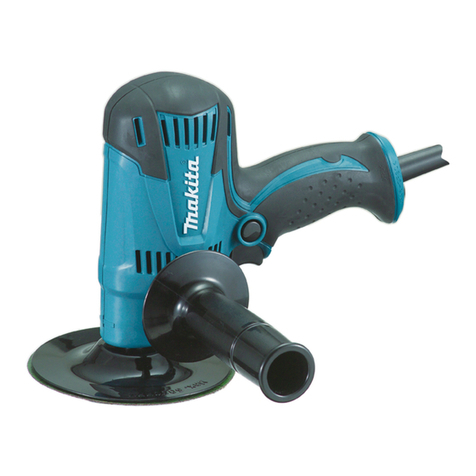10 DEUTSCH
Bewahren Sie alle Warnungen
und Anweisungen für spätere
Bezugnahme auf.
Der Ausdruck „Elektrowerkzeug“ in den Warnhinweisen
bezieht sich auf Ihr mit Netzstrom (mit Kabel) oder Akku
(ohne Kabel) betriebenes Elektrowerkzeug.
Sicherheitswarnungen für Schleifer
1. Tragen Sie stets eine Sicherheits- oder
Schutzbrille. Eine gewöhnliche Brille
oder Sonnenbrille ist KEIN Ersatz für eine
Sicherheitsbrille.
2. Halten Sie das Werkzeug mit festem Griff.
3. Lassen Sie das Werkzeug nicht unbeaufsich-
tigt laufen. Benutzen Sie das Werkzeug nur im
handgeführten Einsatz.
4. Dieses Werkzeug ist nicht wasserdicht.
Benetzen Sie daher die Bearbeitungsäche
nicht mit Wasser.
5. Sorgen Sie für ausreichende Belüftung des
Arbeitsplatzes beim Schleifen.
6. Manche Materialien können giftige
Chemikalien enthalten. Treffen Sie
Vorsichtsmaßnahmen, um das Einatmen
von Arbeitsstaub und Hautkontakt zu verhü-
ten. Befolgen Sie die Sicherheitsdaten des
Materialherstellers.
7. Der Gebrauch dieses Werkzeugs zum
Schleifen bestimmter Produkte, Lacke und
Holz kann den Benutzer Staub aussetzen, der
gefährliche Substanzen enthält. Verwenden
Sie einen geeigneten Atemschutz.
8. Vergewissern Sie sich vor dem Gebrauch,
dass der Schleifteller keine Risse oder
Brüche aufweist. Risse oder Brüche können
Personenschäden verursachen.
DIESE ANWEISUNGEN
AUFBEWAHREN.
WARNUNG: Lassen Sie sich NICHT durch
Bequemlichkeit oder Vertrautheit mit dem Produkt
(durch wiederholten Gebrauch erworben) von der
strikten Einhaltung der Sicherheitsregeln für das
vorliegende Produkt abhalten. MISSBRAUCH oder
Missachtung der Sicherheitsvorschriften in dieser
Anleitung können schwere Personenschäden
verursachen.
FUNKTIONSBESCHREIBUNG
VORSICHT: Vergewissern Sie sich vor
jeder Einstellung oder Funktionsprüfung des
Werkzeugs stets, dass es ausgeschaltet und vom
Stromnetz getrennt ist.
Schalterfunktion
VORSICHT: Vergewissern Sie sich vor dem
Anschließen des Werkzeugs an das Stromnetz
stets, dass das Werkzeug ausgeschaltet ist.
►Abb.1: 1. Schalter
Zum Einschalten des Werkzeugs drücken Sie die
Seite „I“ (Ein) des Schalters. Zum Ausschalten des
Werkzeugs drücken Sie die Seite „O“ (Aus) des
Schalters.
MONTAGE
VORSICHT: Vergewissern Sie sich vor der
Ausführung von Arbeiten am Werkzeug stets,
dass es ausgeschaltet und vom Stromnetz
getrennt ist.
Anbringen oder Abnehmen des
Schleifpapiers
Öffnen Sie die Papierklemme durch Anheben des
Hebels, um ihn aus der Verriegelungsöffnung zu lösen,
und führen Sie dann das Papierende in den Klemmteil
ein,wobeiSiediePapierkantenachundparallelzu
den Seiten der Grundplatte ausrichten. (Vorheriges
Biegen des Schleifpapiers erleichtert die Anbringung.)
Stellen Sie den Hebel nach der Anbringung des
Schleifpapiers wieder auf seine Ausgangsstellung
zurück.
►Abb.2: 1. Klemmteil 2. Schleifpapier 3. Spannhebel
Wiederholen Sie den gleichen Vorgang auf der anderen
Seite der Grundplatte, und achten Sie auf angemes-
sene Spannung des Schleifpapiers.
Vergewissern Sie sich nach dem Einführen des
Schleifpapiers, dass es vom Klemmteil sicher gehalten
wird. Anderenfalls kann das Schleifpapier sich lösen
und verrutschen, was ungleichmäßige Schleifwirkung
zur Folge haben kann.
Wenn Sie Schleifpapier ohne Staubabsauglöcher ver-
wenden, stanzen Sie Löcher mit der Lochungsplatte
(Sonderzubehör) aus.
Setzen Sie die Lochungsplatte so auf das Papier, dass
ihre Führung bündig mit den Seiten der Grundplatte
abschließt. Drücken Sie dann die Lochungsplatte an,
um Löcher in das Schleifpapier zu stanzen.
►Abb.3: 1. Lochungsplatte
Zum Entfernen des Papiers lösen Sie die
Papierklemme, wie oben beschrieben.
Staubsack
►Abb.4: 1. Absaugstutzen 2. Staubsack
Befestigen Sie den Staubsack am Absaugstutzen. Der
Absaugstutzen ist konisch. Schieben Sie den Staubsack zum
Anbringen bis zum Anschlag fest auf den Absaugstutzen,
damit er sich während des Betriebs nicht löst.
UmbesteErgebnissezuerzielen,empehltessich,
den Staubsack zu entleeren, wenn er etwa halb voll ist,
wobei durch leichtes Abklopfen möglichst viel Staub
gelöst werden sollte.
